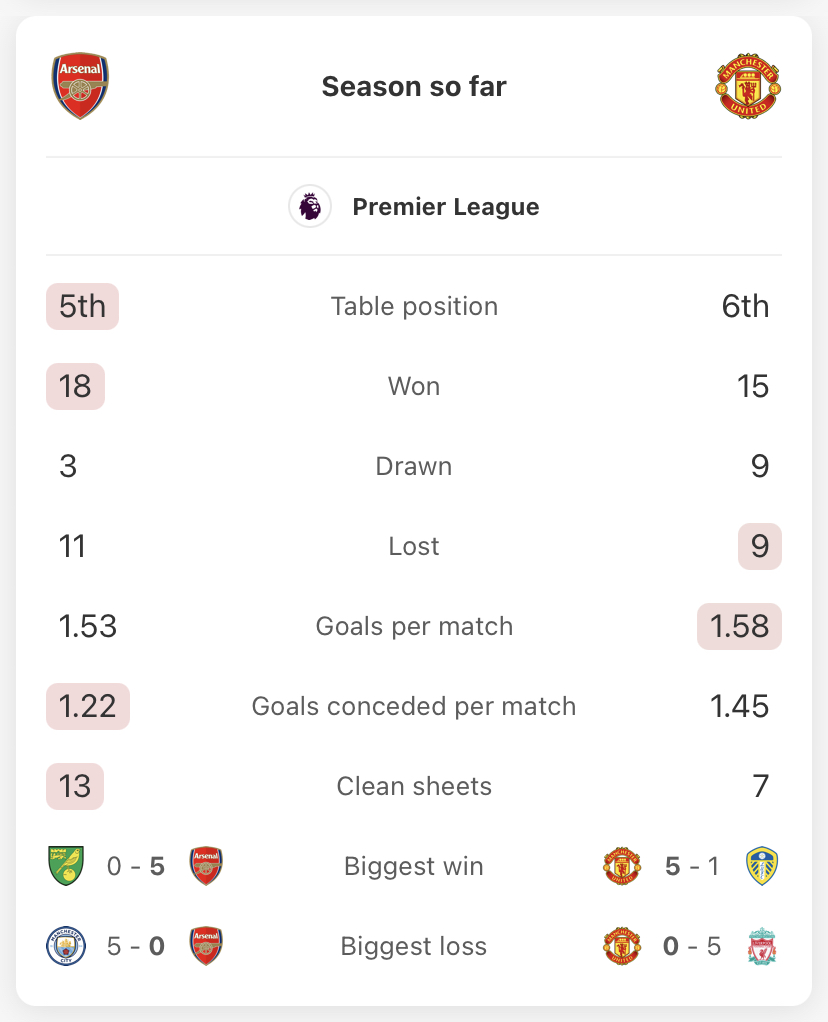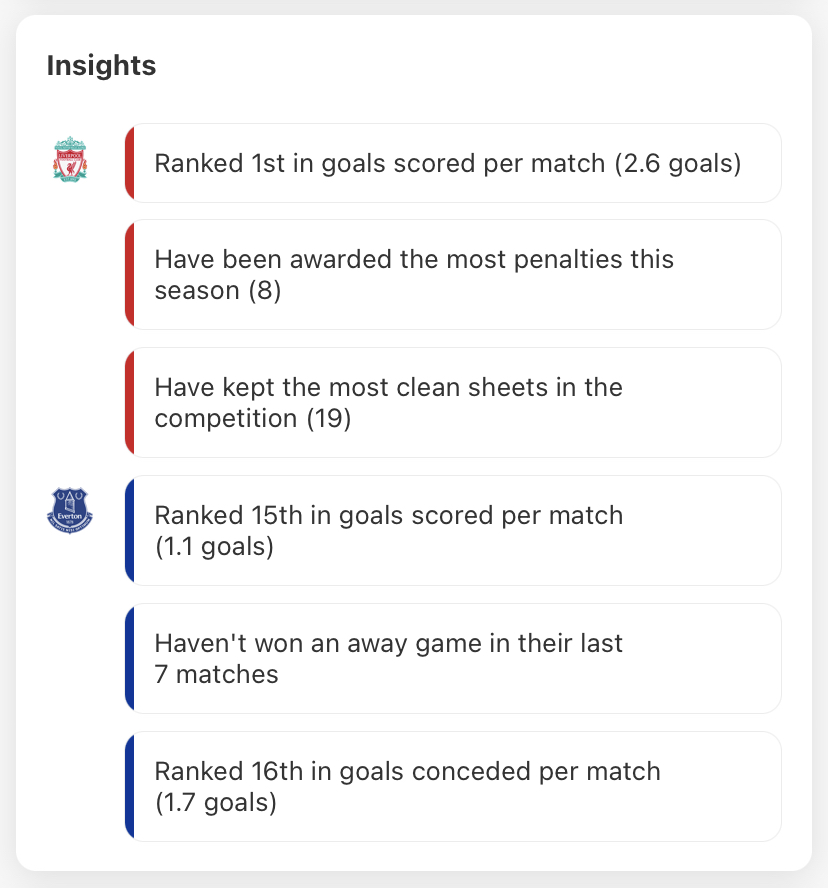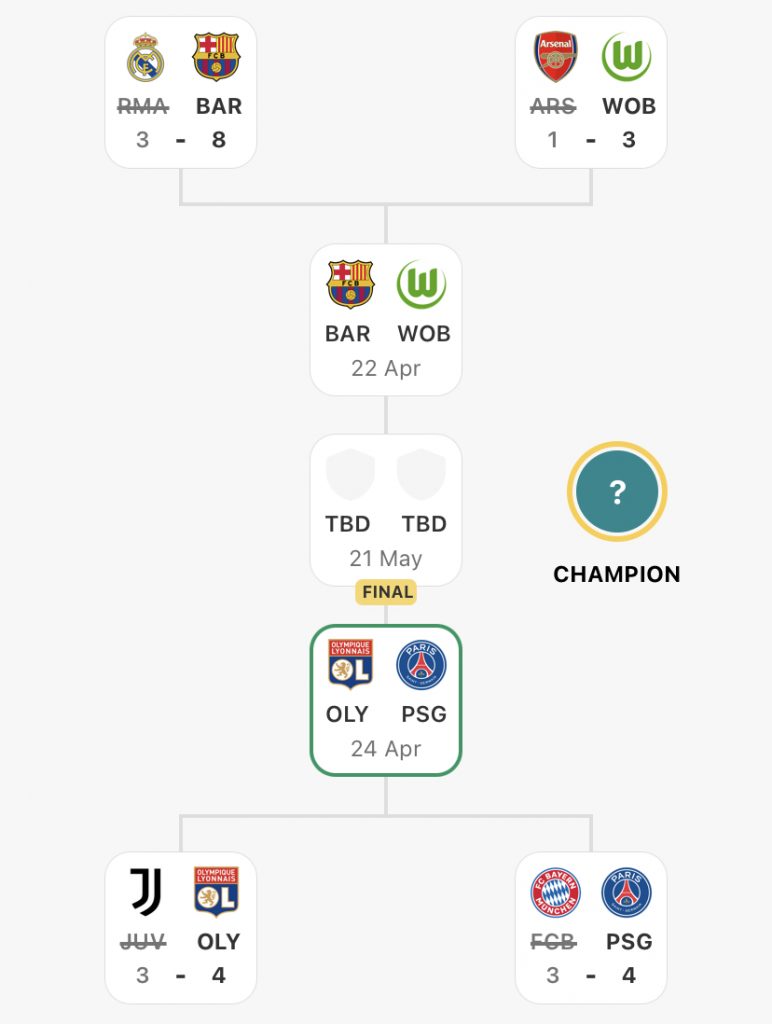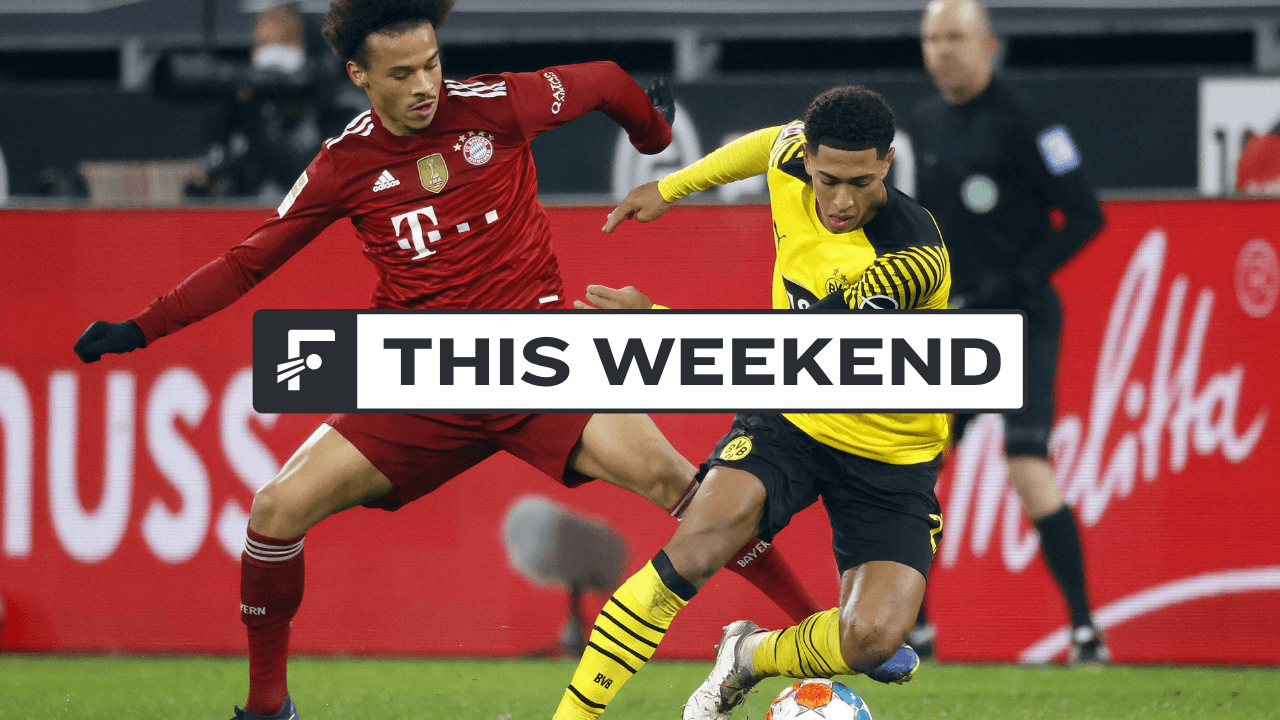The best action to follow this weekend
If you would like to receive this weekly preview direct to your inbox, sign up to our FREE mailing list by clicking here.
Saturday
?? Big nationwide rivalries don’t come much bigger than Der Klassiker, the battle for supremacy in German football between Bayern and Dortmund. And truth be told, since 2012, there also aren’t many as lopsided as this one.
Win on Saturday and Bayern will claim their 10th consecutive Bundesliga title and extend their record run of victories over Dortmund to eight (in all competitions). Should Dortmund pull off a surprise result however, they’d likely only delay the inevitable. A victory leaves them seven points behind with three games remaining.
But where there’s hope, there’s a way, as they say…unless perhaps you’re a student of the German game over the last decade.

?? In Spain, the Copa del Rey takes centre-stage on Saturday with the two of the country’s less-heralded sides competing in the 2022 Final.
That said, Real Betis and Valencia do have 10 Copa titles between them, and Valencia did win it as recently as 2019 but this is the only the second time in 14 years that one, or two of the big three – Real Madrid, Barcelona or Atlético, haven’t featured in the showpiece.
Betis come in to the game off the back of a midweek defeat to Elche as they compete for Champions League qualification in the league (they currently sit fifth) whilst Valencia have won just one of their last six and are very much mid-table in La Liga.
??????? There’s five Premier League games scheduled across the day, with perhaps the most crucial coming in the early kick-off at the Emirates. Arsenal vs. Manchester United may have decided the title in years gone by but this time, it’s all about catching Spurs and more specifically, the fourth Champions League qualification spot.
A home win would put Arsenal above their London rivals whilst a victory for Ralf Rangnick’s under-pressure squad would leave all three sides level on 57 points.
Spurs do have the chance to remedy all that by winning their own game later in the day – they play away at Brentford, who appear to revel in causing an upset since their promotion to the top flight. There will also be an emotional reunion with former player Christian Eriksen.
In the battle for the title itself, Manchester City can extend their one-point lead at the top of the table, should they beat Watford at home. And in games featuring sides still fighting against relegation, Aston Villa go to Leicester City and Norwich City entertain Newcastle United.

?? The Serie A title race remains on a knife-edge with the top three separated by four points going in to a weekend where most sides have five games to play.
Inter, who sit second have the opportunity to move above rivals Milan on goal difference, if they can overcome former manager José Mourinho and his current club Roma, on Saturday evening. The Nerazzurri also have the advantage of having played a game less than the sides around them.
?? There was a full midweek round of games in Ligue 1 where the key result – a comeback win for Marseille at home to Nantes ensured that PSG had to put the title-winning champagne on ice and re-focus on their Saturday fixture against Lens.
A win at the Parc des Princes will give PSG their 10th league title, regardless of results elsewhere and perhaps grant Mauricio Pochettino a little more time at the helm after a difficult season on and off the pitch.

Sunday
??????? The Merseyside Derby dominates proceedings on Sunday as Liverpool look to reign in Manchester City at the top of the Premier League table and Everton search for all the points they can get in the battle to avoid the drop.
Burnley’s win over Southampton on Thursday night leaves Everton perilously close to the relegation zone so for the Blue half of the city, a repeat of the 2-0 win they enjoyed at Anfield last season would be very much welcomed. Anyone who watched Liverpool take Manchester United apart on Tuesday night however, might just fear for Frank Lampard’s defence.
Amongst the day’s other games, Chelsea will look to return to winning ways against London rivals West Ham and Brighton meet Southampton on the South Coast.

?? In Serie A on Sunday, the Milan vs. Rome double is completed as Milan go to Lazio 24 hours after Inter’s clash with Roma.
Prior to Milan’s 3-0 defeat to Inter in Tuesday’s Coppa Italia semi-final, the current leaders hadn’t conceded a goal in six games but you can expect Lazio’s Ciro Immobile, the league’s top scorer to test that record. The day’s other key fixture comes as Napoli go to Empoli hoping to keep themselves within touching distance of the Milan club’s above them.
?? There’s just one game in La Liga this weekend, and that is essentially the one game in hand that Barcelona have on the rest of the teams battling it out to finish second behind Real Madrid.
Xavi’s side picked up a vital win at Real Sociedad on Thursday night, meaning they are now unbeaten in 13 away games – their best run since 2019. But on Sunday, they’re back at Camp Nou, scene of recent calamities against Eintracht Frankfurt and Cadíz, to face mid-table Rayo Vallecano.
? The second of this season’s Women’s Champions League semi-finals takes place on Sunday, and that’s the battle between France’s two dominant clubs – Lyon and PSG.
Domestically, PSG managed to end Lyon’s 14-year run of league title wins last season but Lyon have fought back this year, beating their rivals 6-1 in November and boasting a healthy 5-point lead in the current standings. But at the quarter-final stage of the Champions League last season, PSG did knock out Lyon, the competition’s record winners so this tie remains in the balance!

? With FotMob based in Norway we always like to preach the gospel of Nordic football so we’ll end this week by pointing you in the direction of two massive games taking place here, and in Sweden.
Until the recent emergence and dominance of the Europa Conference League-bothering Bodø/Glimt, Rosenborg and Molde were the Eliteserien’s two biggest sides. They meet, in what is just the league’s fourth round of games, at Rosenborg on Sunday.
In Sweden, there’s also an early season clash between fierce Stockholm rivals AIK and Djurgården, which is often sited as the region’s most intense Derby fixture.
If you want to follow any of the games mentioned above, click on the relevant link and tap the bell icon to receive all the key match updates.
Or join us on Twitter, Facebook and Instagram to discuss all the important football going on this weekend!
Cover Image from IMAGO
